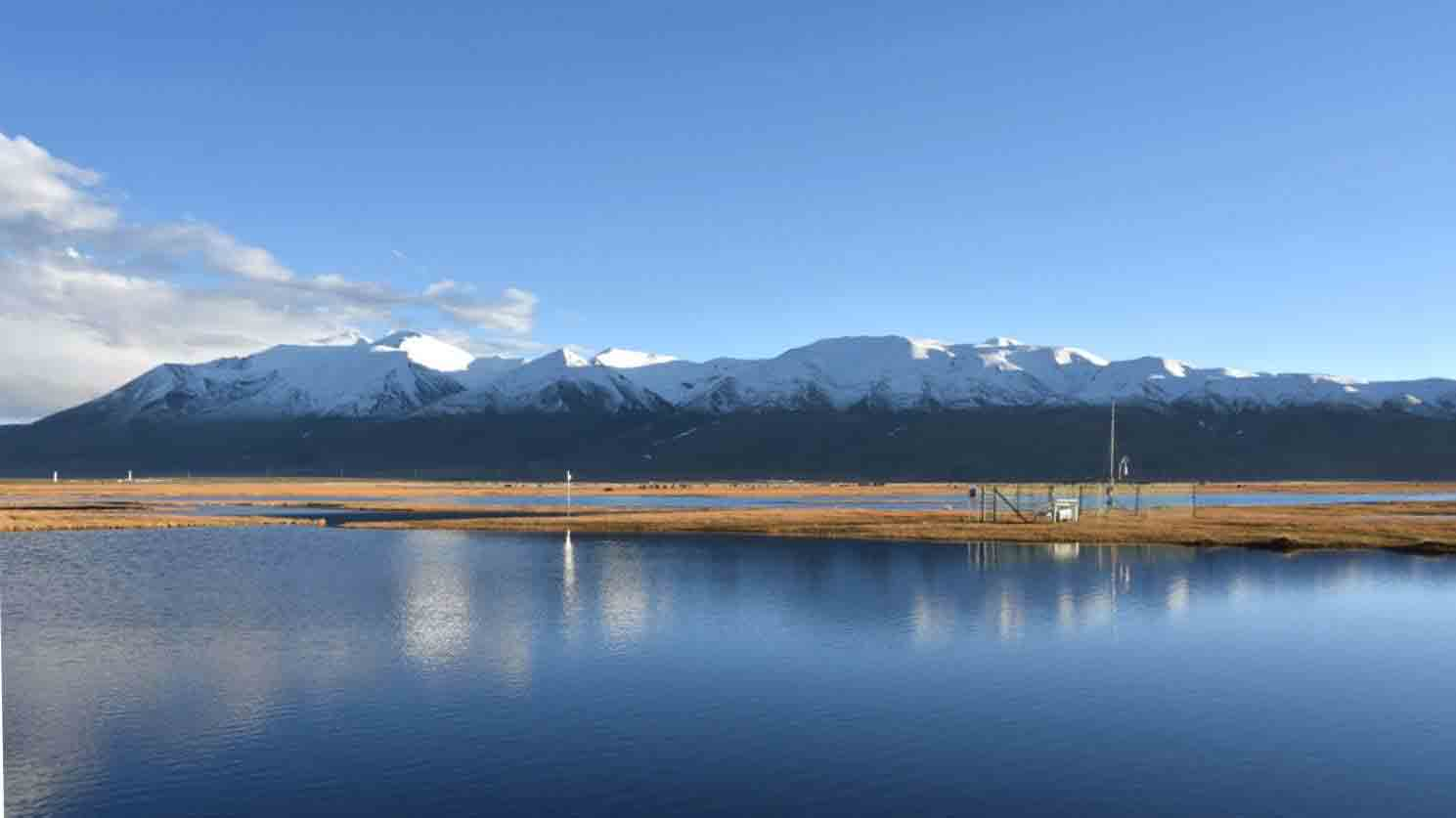By Anupama Prakash
Permafrost or frozen ground contains trapped carbon dioxide (CO2) and methane making it a carbon sink. However, rising temperatures have caused these gases to escape into the atmosphere. Researchers from China now examine the impact of rising temperatures on the carbon balance in the Tibetan Plateau. They report that the uptake of CO2 by the growing vegetative cover on the thawing permafrost outpaces the release of CO2, making the region an effective carbon sink.

Permafrost contains trapped gases such as carbon dioxide and methane. Rising temperature cause these regions to thaw out and release the trapped gases, increasing the CO2 levels in the atmosphere (Photo courtesy: Xiaodan Wang)
The permafrost cover on the earth contains trapped carbon dioxide and serves as a carbon reservoir or sink. Outside the tundra regions at the higher latitudes, the Tibetan Plateau contains the largest amount of alpine permafrost on earth and is assumed to hold over 10% of all carbon stored in the permafrost. The rising temperatures in the region have led to a decrease in permafrost and an increase in the vegetative cover. These changes have disrupted the delicate CO2 balance by modifying both CO2 uptake and release. While the thawing of the permafrost releases trapped CO2 from the soil, the increased vegetative cover affects the CO2 balance as plants can both release and take up CO2 via respiration and photosynthesis, respectively. However, the contributions from each process are not clearly understood.
Researchers from China wanted to get a clearer picture of the overall CO2 balance brought about by the rising temperatures. In a study published in?Proceedings of the National Academy of Sciences, researchers led by Professor Xiaodan Wang of the Institute of Mountain Hazards and Environment, Chinese Academy of Sciences, determined the CO2 balance in the Tibetan Plateau using both observational data and a model. The CO2 exchange data between the different systems were collected at 32 different sites across the Tibetan Plateau ecosystems. These sites are known as eddy covariance sites and the observations from these sites were used to directly measure the exchange of CO2. Using this approach, the researchers determined the effects of elevation, time, vegetative cover, and seasonal variation on the CO2 balance in the Tibetan Plateau. Along with direct observations, they also developed a model using temperature and precipitation projections to predict the changes in the CO2 balance with time. Using experiments, they then determined the change in CO2 levels resulting from a change in the climate. “By connecting eddy covariance datasets, the process-based model, and the experiments, we aim to understand whether the Tibetan Plateau currently acts, and will continue to act, as a CO2 sink under a rapidly changing climate”, says Prof. Xiaodan Wang regarding the study.
From the observed datasets, they found that, while there were some differences in the CO2 balance between the different eddy covariance sites, the Tibetan Plateau remains a net effective CO2 sink, and the observations indicated that the region took in 130.0 ± 53.6 Tg of carbon per year during the period 2003 to 2019. “This is about one-third the size of subtropical and temperate forests,” comments Prof. Wang. The altitude seems to have played an important role in determining the carbon balance as it was a predominant factor driving plant growth in the region. The regions that were at an altitude of 4000 m were the effective CO2 sinks compared to the other altitudes.
Both the model and the datasets showed that the current rise in temperature is increasing the amount of carbon captured by the Tibetan Plateau and its behavior as a carbon sink. Regarding the observations, Prof. Wang says,” The boost to plant growth in the warming–wetting climate of the Tibetan Plateau outpaces the loss of CO2 from thawing permafrost and plant respiration, indicating plant-dominated negative feedback in the alpine permafrost on the Tibetan Plateau.”
The Tibetan Plateau is an important source of water for many Asian rivers. Monitoring and predicting the carbon balance in the region is a necessary tool to forecast the climate change in the region and its effects on the downstream river basins.
